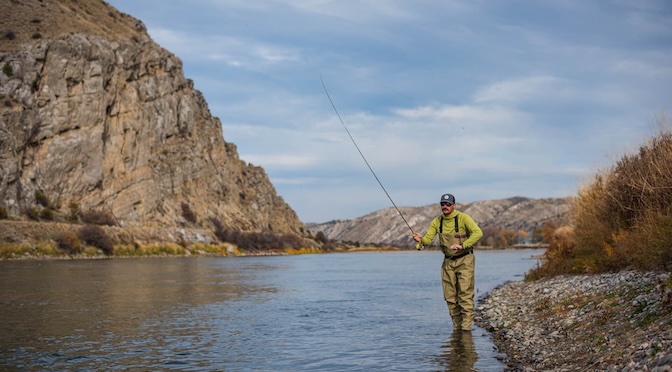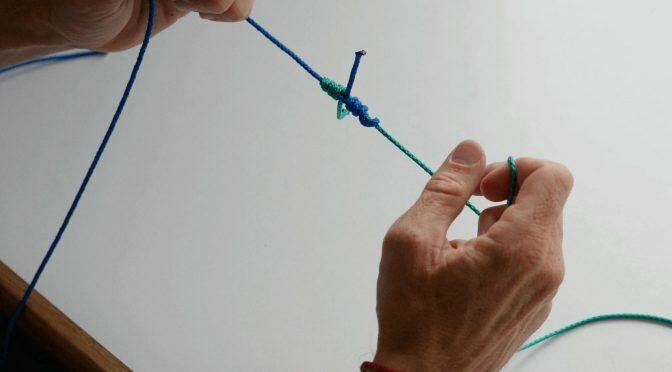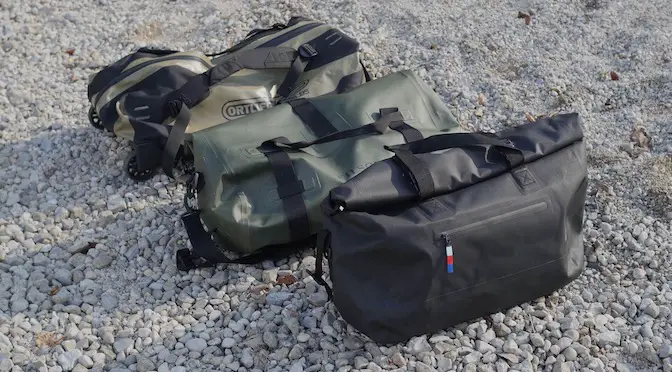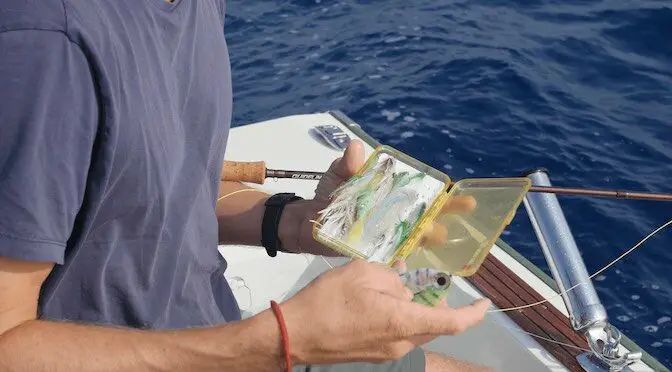Last updated on November 10th, 2025.
- Can YETI’s new backpack deliver? Thoughts on the YETI CAYO - November 20, 2025
- How to Put a Worm on a Hook: Proven Methods for a Perfect Bait - November 18, 2025
- How to Fish in a River: An Essential Guide to Proven Techniques - November 18, 2025
The Rod Selection Compass
The primary difference between a casting and spinning rod is the reel placement and intended use; spinning rods mount the reel underneath and are best for beginners, while casting rods mount the reel on top and offer more power and precision for experienced anglers. For anyone new to fishing, a spinning setup is the recommended starting point because it is more forgiving, easier to cast, and far less prone to the frustrating line tangles known as “bird’s nests.”
As a simple rule of thumb, spinning rods excel with lighter lines in the 2-10 lb test range and smaller lures. Conversely, casting rods are built to handle heavier lines, typically from 10-30 lb test, and the larger, heavier baits required for power fishing. To make an informed choice, it’s crucial to understand the core mechanics of a fishing rod, as the interplay between rod power and action dictates how it performs with different lures and fish.
Why Choosing the Right Rod Is Your First, Most Important Cast
Selecting the correct rod isn’t just about gear; it’s about matching your tool to the task to prevent frustration and increase your catch rate. The right choice makes your time on the water more effective and enjoyable, while a mismatched rod and reel setup can lead to poor casting distance, inaccurate lure placement, and even lost fish.
Equipping yourself properly is a holistic process that extends beyond just your rod and reel. Just as the right rod is critical for presenting a lure, having the right gear from head to toe ensures you can fish safely and effectively in any environment, which starts from the ground up with the best wading boots for the conditions.
The Anatomy of a Rod: Key Design Differences
The most obvious visual distinction between the two rod types is the placement of the reel and line guides. On a spinning rod, the reel and guides are mounted on the bottom of the rod blank, while on a casting rod, they are mounted on top.
This orientation dictates the design of the line guides. Spinning rod guides are very large near the reel to control the wide loops of line coming off the stationary spool, and they taper to a small guide at the tip. Casting rod guides are smaller, more numerous, and sit closer to the rod blank for better control as line flows in a straight path from a revolving spool.
Casting rods almost always feature a “trigger grip” under the reel seat. This small, hook-like extension provides a secure anchor point for your index finger, which enhances control and leverage during casting and retrieving. Ultimately, the design of each system is dictated by its line flow mechanics: line uncoils in large loops from a spinning reel, while it flows in a straight, direct path from a baitcasting reel.
Spinning vs. Casting: A Head-to-Head Comparison
When compared directly, spinning setups are significantly more beginner-friendly, while casting rods offer superior accuracy and power for experienced anglers. Spinning rods are the clear choice for lightweight lures and finesse techniques, whereas casting rods provide the strength needed for heavy lines, large lures, and pulling fish from thick cover.
Ease of Use & Learning Curve Spinning setups are significantly more forgiving of casting errors and are the ideal starting point for new anglers. Casting rods require mastering thumb control on the spool to prevent the line from overrunning and creating a backlash, which demands more practice to master.
Lure & Line Capability Spinning rods are the superior choice for throwing lightweight lures under 1/4 ounce and using light fishing lines. Casting rods provide the power needed for heavy lines and larger lures like deep-diving crankbaits, heavy jigs, and large spinnerbaits. The type of fishing line you choose is as important as the rod itself, as understanding the differences between fluorocarbon and mono will help you optimize your setup’s performance.
Accuracy, Distance & Control Casting rods offer unparalleled accuracy for precise lure placement, allowing anglers to target specific structures like logs, dock pilings, or weed edges with pinpoint control. While both systems can achieve long distances, casting rods generally throw heavier lures farther, and spinning rods excel at casting lightweight lures for distance, especially in windy conditions.
Power & Fish-Fighting Ability Casting rods are built with more backbone, giving them superior power for pulling large, strong fish like bass and pike out of heavy cover such as weeds, brush, and lily pads. The design of a casting setup provides more direct pulling power and leverage when fighting a fish.
The S.T.A.R. Selection Protocol: Your 4-Step Decision Framework
This simple four-step framework—Skill, Target, Application, and Rod—transforms abstract knowledge into a concrete process you can follow to make the right choice. By systematically evaluating these four factors, you can confidently select the perfect rod for your needs.
Step 1: Skill Level Assessment Be honest about your experience. If you are a beginner or fish infrequently, start with a spinning rod. Its forgiving nature will help you build confidence and enjoy your time on the water. If you are an experienced angler looking for maximum precision and power, a casting rod is your goal.
Step 2: Target & Technique Analysis Determine your primary goal. For finesse techniques like drop shotting or Ned rigs and for targeting smaller species like trout and panfish, choose a spinning rod. For power techniques like flipping, pitching, or frogging and for targeting larger species like big bass or musky, a casting rod is the superior tool.
Step 3: Application Matching Consider your typical lure weight and fishing environment. If you primarily throw small, light baits in open water or often face windy conditions, a spinning rod is the logical choice. If you need to throw heavy lures and pull fish from thick cover, a casting rod is non-negotiable.
Step 4: Rod Selection Based on the first three steps, make your selection. Remember, this isn’t a permanent choice that locks you into one system forever. Many dedicated anglers own both spinning and casting setups to cover a wider range of applications and be prepared for any situation.
Common Mismatches and How to Avoid Them
The most common mistake anglers make is mismatching their gear, which leads to poor performance and frustration. Never pair a baitcasting reel with a spinning rod or a spinning reel with a casting rod. The guide placement, handle design, and overall mechanics are purpose-built for a specific reel type and will not function correctly if mismatched.
Another frequent error is the power mismatch. Avoid using a standard spinning setup for heavy-duty power fishing techniques like flipping thick mats. The rod lacks the necessary backbone, and the reel’s drag system isn’t designed for that kind of torque. Similarly, don’t fall for the finesse fallacy by trying to throw extremely lightweight lures with a conventional casting setup. You will struggle to achieve casting distance and will likely experience frequent backlashes, as this is the primary domain of spinning gear.
Beyond the Basics: Graduating to a Two-Rod System
Most serious anglers don’t choose one system over the other; they own both to become more versatile and effective on the water. Having a dedicated spinning setup for finesse presentations and a casting setup for power applications allows you to adapt to changing conditions and use the optimal tool for any technique.
As your skills advance, you may explore specialized gear that bridges the gap between these two systems. A prime example is the Bait Finesse System (BFS), a highly specialized type of baitcasting setup designed with a shallow, lightweight spool. This unique design allows it to cast ultra-light lures, some as light as 1/64 ounce, offering the precision and control of a casting reel for delicate finesse presentations that were once only possible with spinning gear.
Frequently Asked Questions
What is the main difference between a casting and spinning rod?
The primary difference is the reel placement and intended use. Spinning rods mount the reel underneath and are ideal for beginners using light lures, while casting rods mount the reel on top and offer more power and precision for experienced anglers with heavier baits.
Which rod is better for beginners, casting or spinning?
A spinning rod is unequivocally better for beginners. Its design is more forgiving, easier to cast without extensive practice, and significantly less prone to the frustrating line tangles, or ‘bird’s nests,’ common with casting reels.
When should you use a spinning rod?
Use a spinning rod for finesse techniques and when throwing lightweight lures, typically under 1/4 ounce. They excel with lighter fishing lines in the 2-10 lb test range and are the superior choice for casting small baits in open water or windy conditions.
When should you use a casting rod?
Use a casting rod for power fishing techniques that require heavy lines, typically 10-30 lb test, and larger lures like heavy jigs or deep-diving crankbaits. Their strong backbone provides the leverage needed to pull large fish like bass or pike out of thick cover.
Are spinning rods better than casting rods?
Neither rod is inherently ‘better’; they are specialized tools for different jobs. Spinning rods are superior for beginners and light-lure finesse techniques, while casting rods provide better power, accuracy, and control for experienced anglers using heavy lures.
Can you use a spinning reel on a casting rod?
No, you should never use a spinning reel on a casting rod or vice versa. The guide placement, handle design, and overall mechanics are purpose-built for a specific reel type, and mismatching them will lead to extremely poor performance and potential gear damage.
Which rod is better for skipping lures under docks?
For most anglers, a spinning rod is much easier and more effective for skipping lures under docks and overhanging cover. The mechanics of a sidearm cast with a spinning setup allow the lure to release low to the water and skip more easily than with a casting setup.
Are spinning rods more sensitive for detecting light bites?
While rod sensitivity is primarily determined by the blank material, spinning rods are often used for finesse techniques where detecting subtle bites is critical. Their typical pairing with lighter lines and more flexible tips can make it easier to feel the faint take of a finicky fish.
What is a Bait Finesse System (BFS)?
A Bait Finesse System (BFS) is a highly specialized type of casting setup with a lightweight, shallow spool designed to throw ultra-light lures. It offers the pinpoint accuracy and control of a casting reel for delicate finesse presentations that were traditionally only possible with spinning gear.






